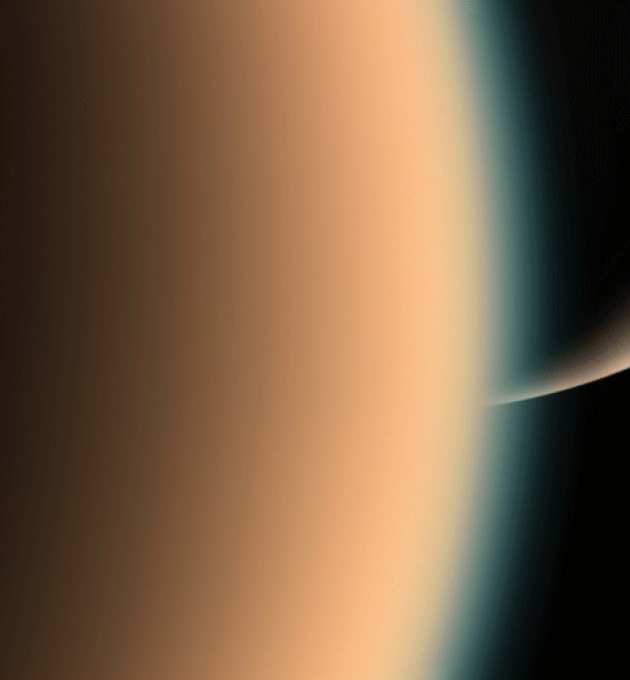
Planetary Aeronomy is the study of the upper (outer) regions of a planet's or moon’s or comet’s atmosphere. These include both the neutral gases of the mesosphere, thermosphere and exosphere as well as their ionised components which form the ionosphere. This region is the interface between a dense atmosphere (or the surface for bodies with a thin atmosphere, such as Ganymede) and the space environment, controlling the exchange of particles, momentum, and energy between a body and the solar wind under the influence of solar radiation.
Thereby, Aeronomy considers the interaction between neutral (atmospheric) and ionised gases and particles, often in the presence of magnetic and electric fields. This interaction will determine what materials are present (the composition), what their energies are (temperatures) and how they move (their velocities).
We investigate Aeronomy of near objects across the Solar System, ranging from comets and moons to terrestrial and giant planets. Our investigations comprise of observations (mostly from spacecraft) and sophisticated numerical modelling work.
Space Missions
While our focus lies in developing and using complex numerical models to understand the physical processes of these regions, we are deeply involved in numerous international space missions.
1) Ongoing missions
- Jupiter ICy Moon Explorer (JUICE) - ESA’s flagship mission to Jupiter and its icy moons (launched: 2023, anticipated arrival: 2031). We are Co-Principal Investigator and Co-Investigator of the Radio and Plasma Wave System (RPWS) and Co-Investigator of the UltraViolet Imaging Spectrograph (UVIS) and Gravity & Geophysics of Jupiter and Galilean Moon (3GM) experiments.
2) Past missions
- Cassini/Huygens (2004-2017): Nasa’s flagship mission to Saturn, Titan and its Icy Moons. We were Team Associate of the Radio and Plasma Wave Science (RPWS) and Science Team Member of the Ion Neutral Mass Spectrometer (INMS) which carried out first ever in-situ measurements of Titan’s and Saturn’s upper atmospheres. While the mission has ended, we are still busy analysing its data and making new discoveries about Titan and Saturn.
- Rosetta (2014-2016): ESA’s mission was the first to rendezvous with a comet, the first to follow a comet on its orbit around the Sun, and the first to deploy a lander to a comet's surface. We were Co-Investigator of the Rosetta Plasma Consortium (RPC) and Associate Scientist of the Rosetta Orbiter Spectrometer for Ion and Neutral Analysis (ROSINA). Through original multi-instrument analysis, we have revealed the auroral origin of ultraviolet emissions. We have unveiled the rich ion zoo and solved the mystery of the presence of cold plasma during low outgassing.
- Venus Express (2006-2014): ESA's first mission to Venus. We were Team Leader of the Venus Express Drag Experiment (VExADE) and Venus Express Supporting Investigator. We carried out the first ever in-situ observations of Venus’ high latitude upper atmosphere (thermosphere) and discovered a wealth of atmospheric waves.
3) Future missions
- Comet Interceptor (launch 2029): The mission comprises of three spacecraft and will be the first to visit a Long Period Comet (LPC) that is going to reach the inner Solar System for the first time. We are Unit Co-PI for Dust Field Plasma (DFP) and Lead of the magnetometer on the probe B2.
Modeling/Simulations
- Global fluid models (General Circulation Models, GCMs) of Titan, Saturn, Jupiter, Earth and Venus. These models, some unique world-wide, investigate the global behaviour of atmospheres and their coupling to the space environment. See publications under links below for more details.
- State-of-the-art 1-D to 3-D kinetic models applied to planets (e.g., gas giants, exoplanets), moons (e.g., Ganymede), and comets. These energy deposition models are key to assess how solar radiation and auroral particles create an ionosphere, a plasma layer which plays a critical role in the interaction between atmospheres and space environment. See publications under links below for more details.
Group Members working on Planetary Aeronomy are:
-
Marina Galand (Ionospheres of planets, moons, and comets; Solar and auroral energy deposition and atmospheric impact). Publications here
-
Ingo Mueller-Wodarg (Planetary and moon thermospheres and ionospheres; Dynamics and global structure). Publications here